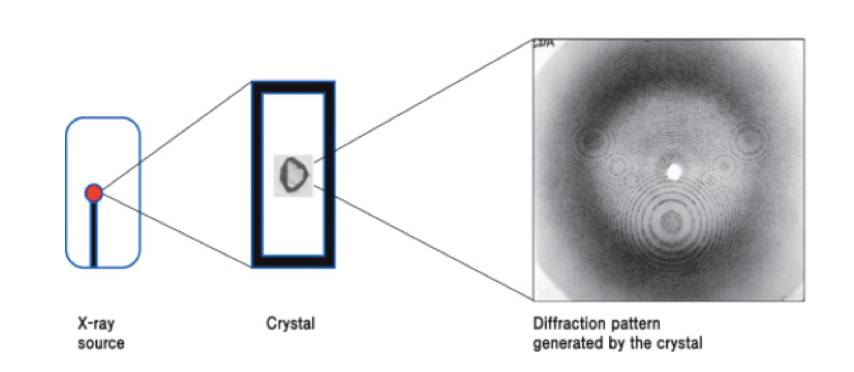Although electrophoresis, chromatography, and mass spectrometry offer widespread knowledge of molecular characteristics, the precise dimensional layout of atoms and the length of chemical bonds is still undetectable, unless by using more complex techniques. X-ray crystallography and NMR technique can solve organic or organometallic molecular structures. Although there are some advantages to using NMR spectroscopy, it is easier to determine the spatial arrangement of the atoms around the chiral center by X-ray method than using NMR spectroscopy.
 Figure 1: X-ray Crystallography
Figure 1: X-ray CrystallographyX-ray Crystallography is a forceful instrument in the clarification of the three-dimensional structure of a molecule at atomic resolution. Data were collected by diffracting X-rays from a single crystal with an ordered, regularly repeating array of atoms. The disadvantage is that X-ray crystallography generally requires placing the samples in non-physiological environments, which can occasionally lead to functionally irrelevant. As the X-rays strike the crystal, most will go right through it, but some will attack the atoms making up the protein and be stave off into a detectable and reproducible pattern.
The first step for X-ray Crystallography is to generate an ample crystal of the studied material. The crystal should be sufficiently large with all dimensions larger than 0.1 mm, the composition is purely, the structure is regularly and have no major internal imperfections, for example, cracks or twinning. The previous reflections disappear, new inflections appear as the crystal gradually rotates, and the intensity of each point is recorded in each direction of the crystal. Multiple datasets may have to be collected, because each dataset covers more than half of the complete rotation of the crystal and typically contains tens of thousands of reflections. Lastly, the collected data are associated with computationally complementary chemical information to gain and refine a model from the arrangement of atoms within the crystal. The final refined model of the atomic arrangement is called a crystal structure and usually stored in a public database.
Creative Proteomics has a strict workflow to analyze X-ray Crystallography to meet your requirements.






